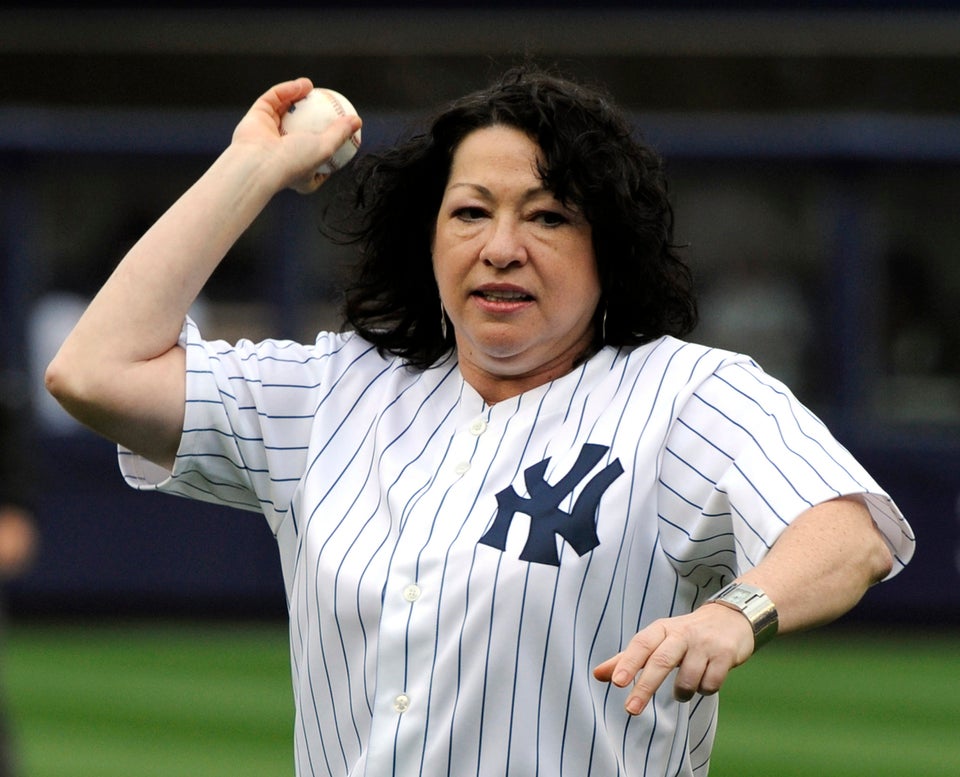WASHINGTON -- On Sunday night, the leaders of America's public-sector labor unions will sleep fitfully, if they manage to sleep at all.
The source of their anxiety -- brewing now for months -- is the Supreme Court's impending decision in Harris v. Quinn, expected to be handed down Monday morning alongside Hobby Lobby, the more high-profile birth control case. In a worst-case scenario for labor and the left, Harris v. Quinn has the potential to cripple public-sector unions.
On its surface, the case deals with home care workers in Illinois who care for the disabled. The plaintiff, Pamela Harris, serves as the caretaker to her son Josh, who suffers from a rare genetic syndrome. The elder Harris receives Medicaid funds to do so and essentially functions as a state employee.
Many state-supported home care workers in Illinois are represented by the union SEIU Healthcare Illinois-Indiana. Under the contract between the union and the state, all home care workers covered under the contract are required to pay a fee to SEIU to cover the expenses associated with bargaining, whether or not they want to be union members.
This arrangement avoids what unions commonly refer to as freeloading -- that is, benefiting from the union's work without helping to underwrite it. Since unions have to represent all the employees in a particular bargaining unit, they commonly seek requirements in their contracts that all workers pay such "fair share" fees.
The Supreme Court has already affirmed that workers can be required to pay fees to public-sector unions to cover bargaining costs, though not political activities, in its 1977 Abood case.
But with Harris v. Quinn, Abood could be turned on its head.
In suing the state, Harris and her co-plaintiffs argue that the required payment to SEIU amounts to a forced association that violates their First Amendment rights. The plaintiffs are represented by the National Right to Work Legal Defense Foundation, an anti-union group that funds lawsuits aimed at diminishing organized labor's clout.
As Harvard law professor Benjamin Sachs has explained, there are several possible outcomes in Harris v. Quinn. The court could simply affirm the lower court's ruling, in which case labor's lost sleep would be all for naught. Or, in a blow to unions that represent home care workers like Harris, the court could rule that such workers are employed by individuals and aren't really state employees. In that case, they wouldn't be covered by Abood and could no longer be required to pay union fees.
But another outcome -- albeit one that appeared unlikely during oral arguments -- is that the justices could embrace the plaintiffs' broad First Amendment argument, in what would be a disastrous case for organized labor at large. Such a decision could give public-sector workers throughout the U.S. the ability to opt out of paying fees to the unions that bargain for them, thereby instituting a kind of right-to-work on the public sector.
There's a reason labor unions combat right-to-work laws so doggedly in states across the country: When given the choice to stop supporting the union, many workers do so.
Although the unionization rate has steadily tumbled to just 6.7 percent of the U.S. private sector, union density in the public sector has held strong for decades. Today, more than one-third of such workers are still unionized, and public-sector unions remain a major force in U.S. policy and politics.
The Supreme Court -- to the fear of union leaders, and to the glee of those on the right who loathe public-sector unionism -- has the potential to change all that on Monday.

